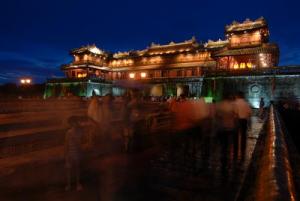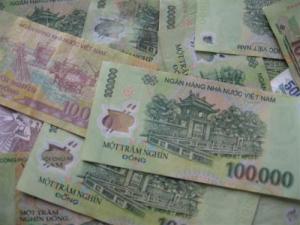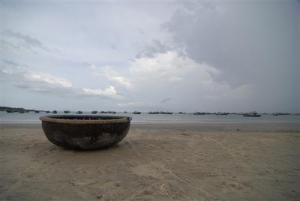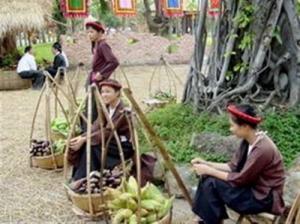Mystery, History and Beauty Unfolds in Dich Long Grotto
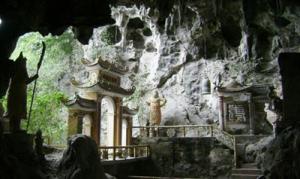
Located about 90 km of Vietnam’s capital, Ninh Binh is a humble province if to be compared with the grandness of ${bigcity_Hanoi:"Hanoi"}. But why many tourists come all the way to this part of the country tells a different tale. Though there are not many elaborate commercial complexes and large trades in Ninh Binh, the province holds a great value of natural attractions, amazing historical and cultural venues, and interesting ecological sights.
Among which brings so much pride to the place is the Địch Lộng Grotto (also known as Co Am Pagoda), known to be the third most beautiful standing grottos in the entire Vietnam. Such recognition was given by King Minh Mang of the Nguyen Dynasty (1791-1841). Its beauty is often praised in songs and poems, and throughout the centuries that had passed, the grotto continued to nestle in Gia Thanh Commune, Gia Vien District, gracing the entire Ninh Binh province and fascinating all the visitors that come by. History talks of how a humble woodcutter gave this haven a name.
It was in 1739 when he was climbing a mountain in search for juicy trees to lop when he accidentally came across the mysterious place. Right about when he stood at the entrance of the grotto, a strong breeze blew through the caves and created a gentle, beautiful sound resembling that of a flute. Taken by the melody that seemed like blowing from within, he called the place “Dich Long” (wind flute). Inside the caves, he saw many beautiful stalactites, others appearing to resemble the Buddha. Realizing this is no ordinary place, he set up a Buddhist altar as a symbol of homage and the pagoda now occupies the first of the three linked caverns that makes up the entire Địch Lộng Grotto. Beneath the altar are more than 100 stone steps that lead to other beautiful caves. At the bottom of the steps lies a communal house said to have been built to honor Ly Quoc Su, a Buddhist monk during the Ly Dynasty (1009-1225) who treats local villagers of different ailments and even King Ly Thanh Tong himself.
Sixteen stone pillars make up the communal house, eight of which are four-meters high adorned with images of powerful dragons afloat the clouds and carps peacefully swimming in the water below. The other eight pillars are three meters high wonderfully inscribed with Han scriptures. A large and impressive bell is noticed hanging over the grotto’s arching entrance. The bell is said to also originate from the Nguyen Dynasty (1802-1945). Apart from housing the Dich Long pagoda, the first of the three caverns that completes the entire Dich Long Grotto is also richly adorned with stalactites and stalagmites assuming many different shapes including elephants, tigers and lions that appear to be guarding the cave’s mouth, the precious gold-plated Buddha statues inside called the Tam The Phat (the three Buddha of the Past, Present, and Future), along with the stone statues of Guan Yin (the bodhisattva of compassion) and Amitabha Buddha. The second cave is known as Toi (meaning dark).
Inside it is a huge stalagmite resembling a woman’s breast, thus, the villagers refer to it as “Nature’s Breast.” Many other stalagmites sit beside it, all resembling different images. Some appear like an elephant drinking, one looks like a monkey carrying her baby on her back while another looks an old woman selling cigarettes among many other images. More wonders will unfold as you enter the third cavern, called the Sang (light) Cave. Each crevice and corner of the cave’s walls and ceiling embody a natural masterpiece of unique sculptures. Some of the stalagmites resemble a kneeling elephant, a horse, lion and many other life forms that make the cave look like a still zoo, yet alive with all beauty and spectacle.
The first cave may have amazing and impressive Buddhas in it, yet the second and third caverns are as equally special. The limestone inside are capable of producing melodious notes when struck with a solid object. The sounds it make are that of ringing bells or wind chimes echoing in harmony with everything the cave hold. Apart from that, the stones assume different colors depending on how much light reaches them from outside. Stories from old folks claim that the cave was used as a haven for wounded Vietnamese soldiers during the time of war, and it was under the very same glistening stalactites where they were nursed and treated. There is in fact an annual festival observed every sixth and tenth day of the first lunar month which performs an important ritual where a thurible is carried to the grotto to symbolize respect and honor for the greatness and holiness of the place.
Unicorn and dragon dances, games and other forms of entertainment are also included to make the celebration truly festive and memorable. With all the history these caves hold, the grotto is highly revered not only in Nin Binh, but to anyone who acquaints himself of the beauty, wonders, mystery and rich past of the Địch Lộng grotto.





